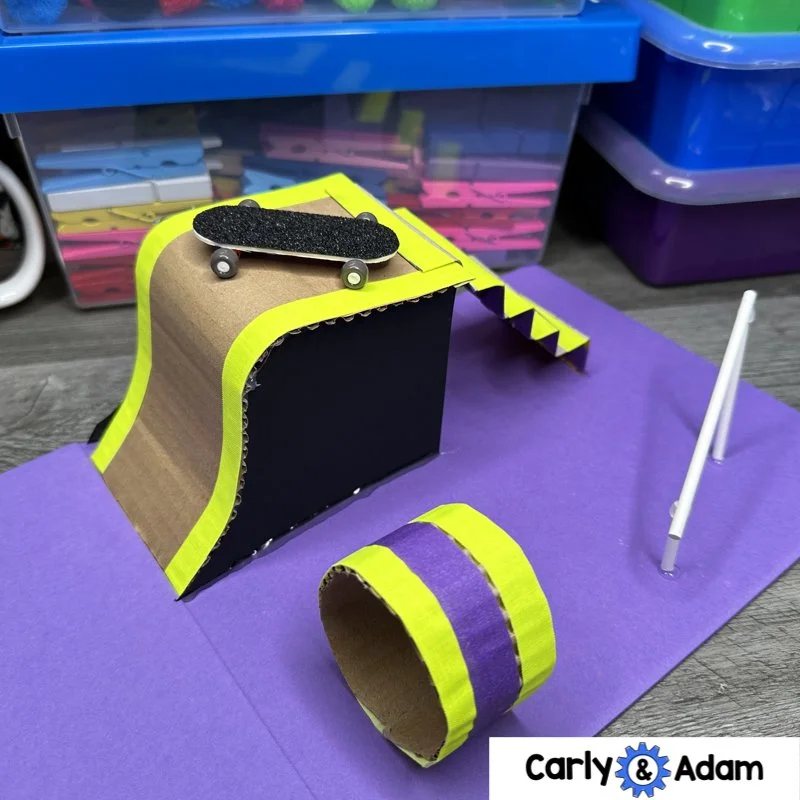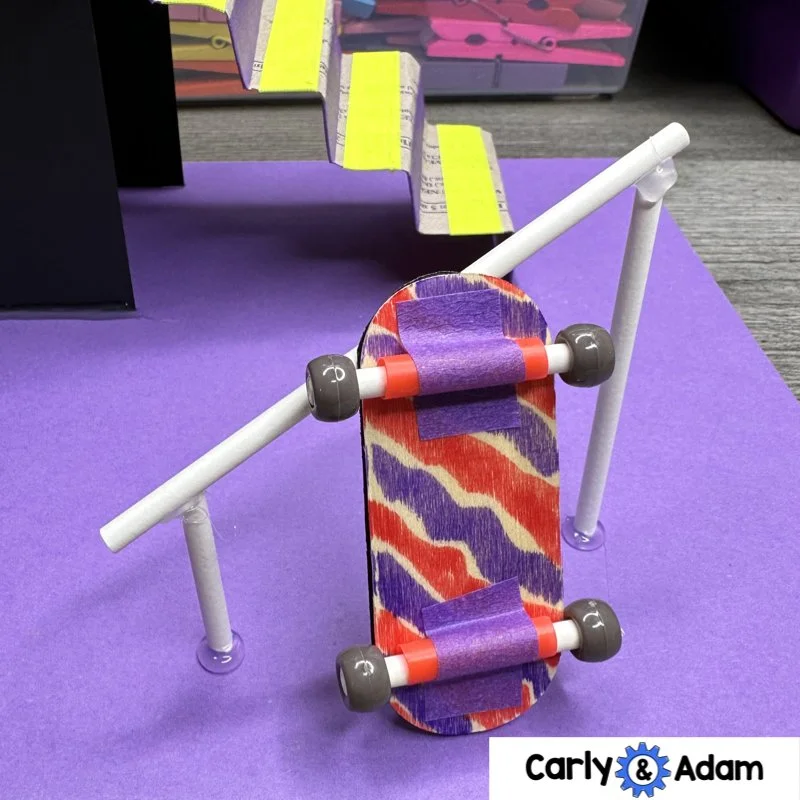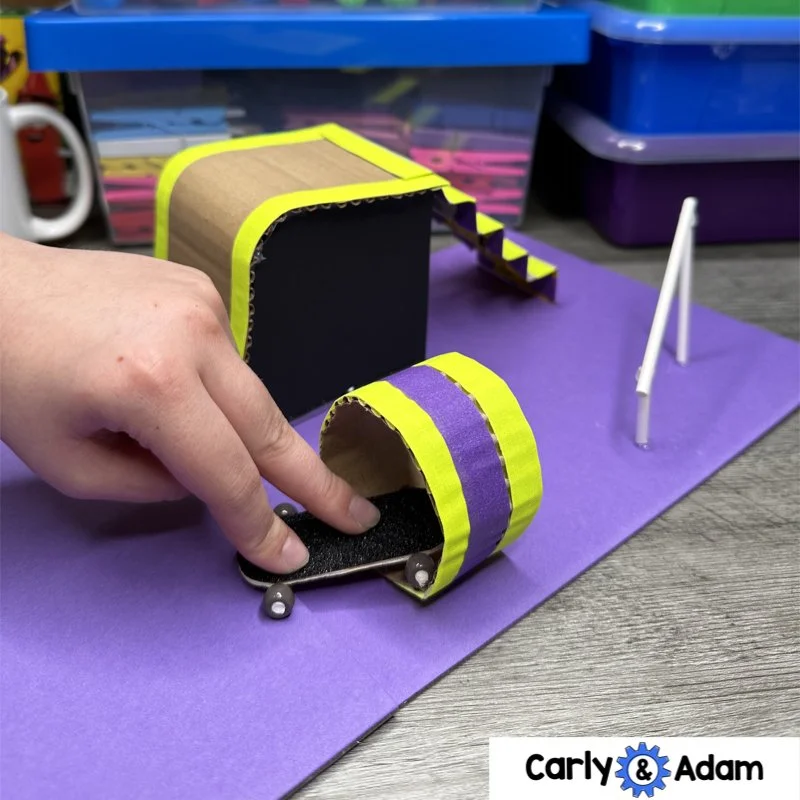Skateboard STEM Challenge
Skateboard and Skatepark STEM Challenge: A Force and Motion STEM Challenge for Upper Elementary
Are you ready to roll into the exciting world of STEM with your upper elementary students? Today, we're diving into a hands-on, wheels-on-the-ground project that's not only going to teach your students about science, technology, engineering, and math but also promises loads of fun and creativity. We're talking about designing and constructing a mini skateboard, commonly known as a fingerboard, and a skatepark to go with it. This project is perfect for fostering creativity, problem-solving, and real-world application of STEM concepts in the classroom.
Why a Fingerboard Skatepark?
Skateboarding is not just a thrilling sport; it's physics in motion. From the dynamics of a turn to the engineering behind the ramps, it's a playground for applying STEM principles. By scaling it down to a fingerboard skatepark, students can explore these concepts hands-on, without needing a helmet!
Materials and Instructions:
To embark on this Skateboard and Skatepark STEM Challenge, you'll need some simple materials like wooden craft sticks (approximately 2.6” x 1”), lollipop sticks, pony beads, thin cardboard, tape, and straws. Optionally, anti slip tape and markers can be used for more elaborate designs.
Learning Outcome: Exploring Force, Motion, and Newton's Third Law
In undertaking the Fingerboard Skatepark Challenge, students delve into the fundamental principles of force and motion, illuminated by the practical application of Newton's Third Law of Motion. This section of the project not only enriches their understanding of physical science concepts but also sharpens their analytical and problem-solving skills.
Through the design and testing of fingerboard ramps and obstacles, students explore the concept of force - a push or a pull that can cause an object to move, stop, or change direction. They observe how applying force to their fingerboards affects the speed and direction of motion, providing a tangible context for abstract scientific principles.
Newton's Third Law states, "For every action, there is an equal and opposite reaction." This law comes to life in the skatepark as students observe how pushing down on the fingerboard (the action) propels it upward and forward (the reaction). This interaction is evident when fingerboards launch off ramps or when students perform tricks, highlighting the law's relevance in everyday motion.
This Skateboard and Skatepark STEM Challenge bridges classroom learning with real-world physics, demonstrating how the principles of force and motion underpin activities like skateboarding. Students gain an appreciation for the practical applications of physics, fostering a more profound interest in STEM fields and real-world problem-solving.
The exploration of force, motion, and Newton's Third Law through the Fingerboard Skatepark Challenge offers students a dynamic and engaging way to understand complex physics concepts. By applying these principles in a creative and hands-on project, students develop a deeper appreciation for the science that governs the world around them, laying the groundwork for future STEM learning and exploration.
LOOKING FOR MORE SUMMER OLYMPICS STEM CHALLENGES?
Check out the Summer Games STEM Challenges Bundle, Perfect for Third, Fourth, and Fifth Grade!
Have more questions or need additional resources?
You can get all 500+ STEM Challenges by Carly and Adam as part of the STEM Teachers Club Membership. Save $5 on your first month using coupon Code: CarlyAndAdamBlog.
We hope you have found this blog post helpful. To stay connected with Carly and Adam's teaching tips and classroom freebies be sure to follow us on Facebook, Pinterest, Teachers Pay Teachers, and subscribe to our blog!






